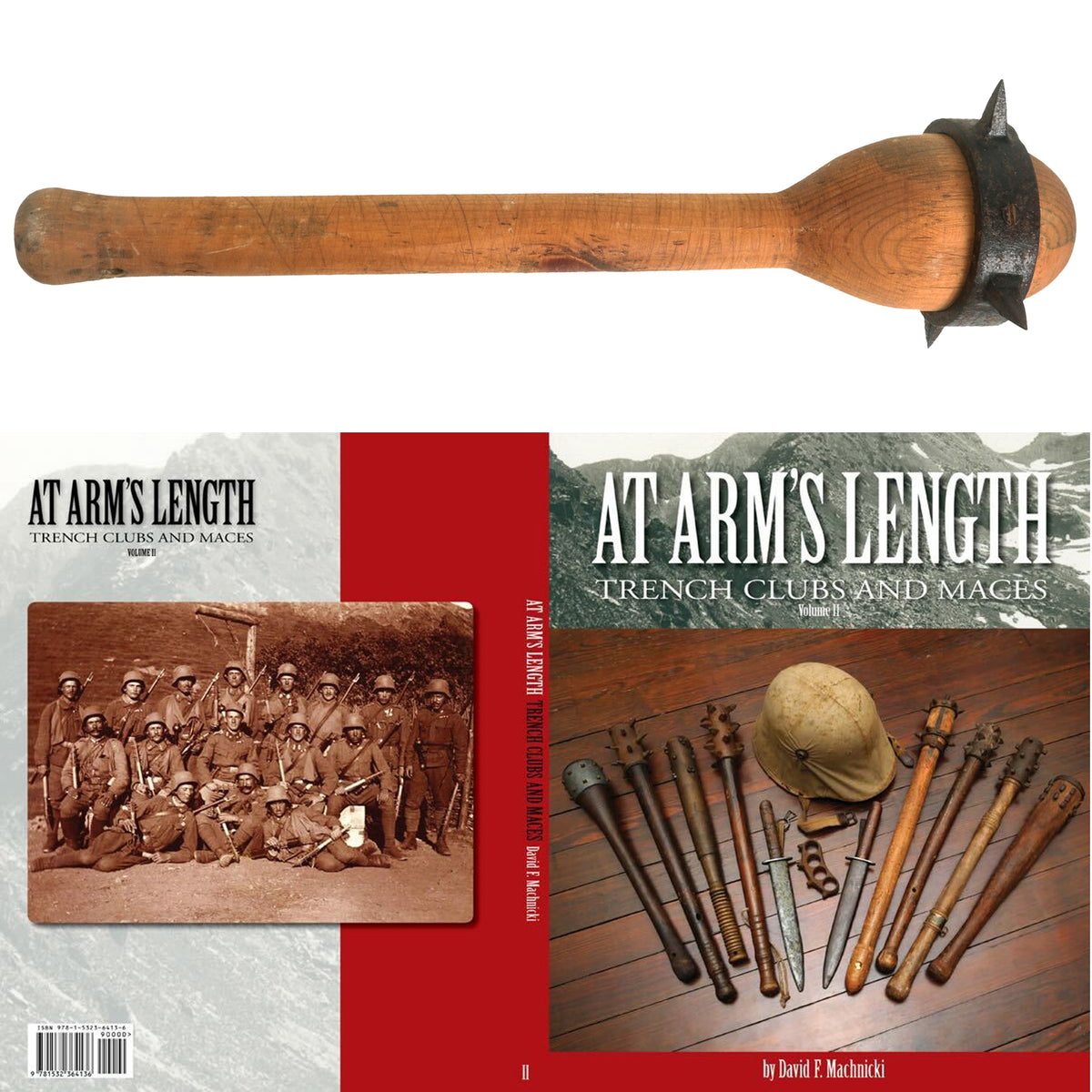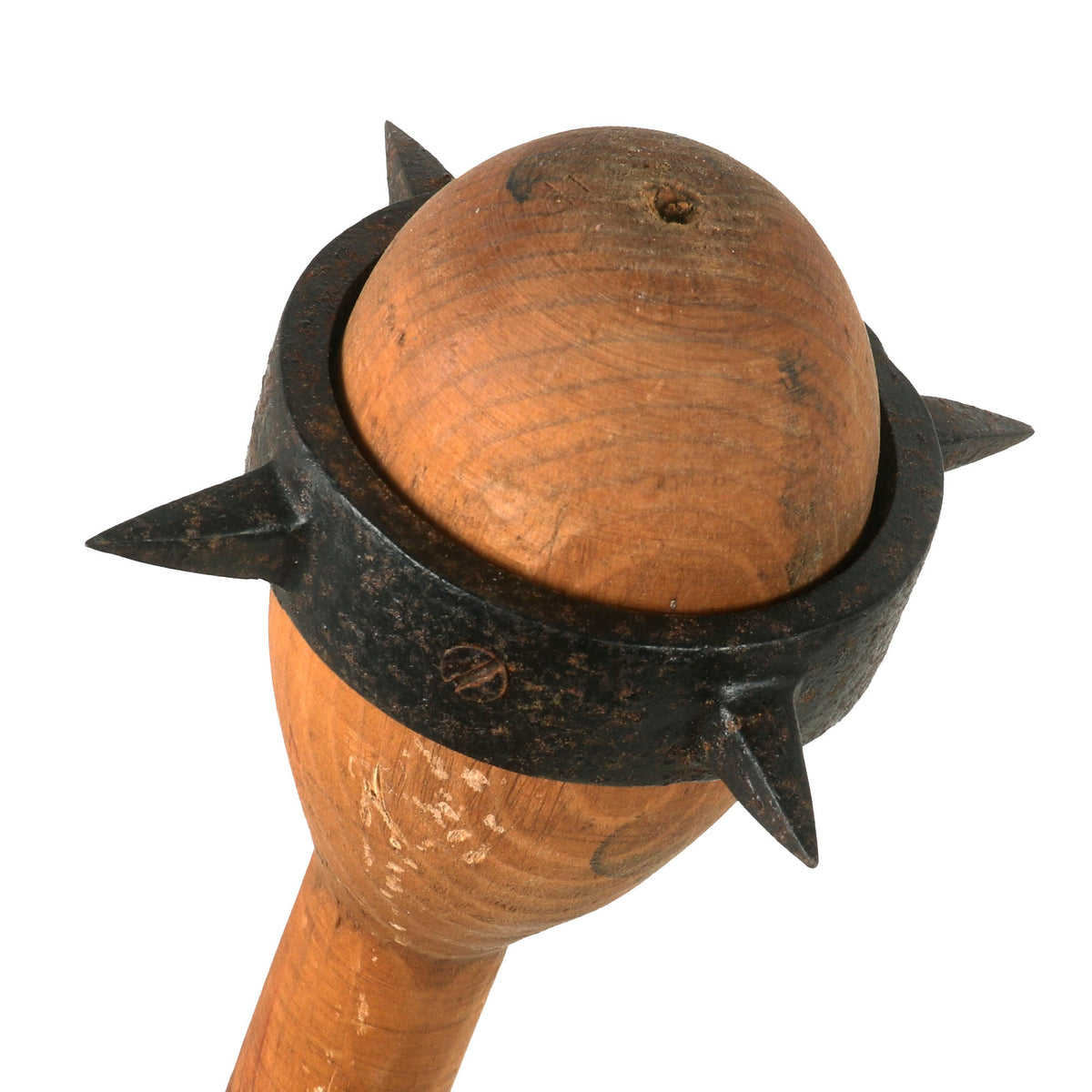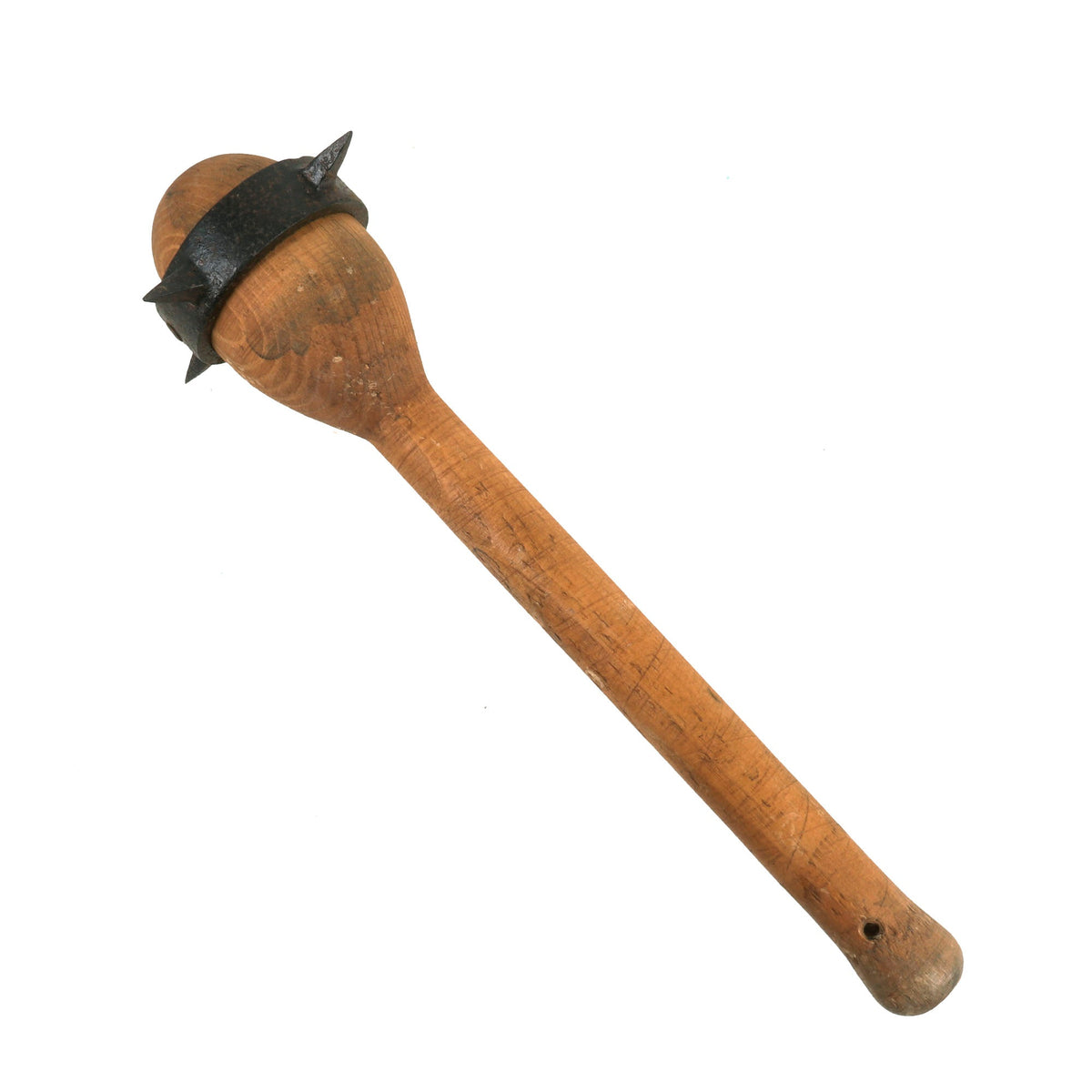Original Austro-Hungarian Trench Club with Four Spiked-Band – Collection of David F. Machnicki Author of At Arm’s Length Series Original Items
$ 1.995,00 $ 498,75
Original Item. One-of-a-Kind. Purchased directly from David F. Machnicki, the author of At Arm’s Length Trench Club book Series, the most up-to-date reference on the topic today. This is a tremendous lightweight trench club with great patina & character. This very club is featured in book three of the series AT ARMS LENGTH.
This is a gruesome example of a Great War Austro-Hungarian Trench Club/Mace comprised of a simple yet effective design. It measures 14½” and weighs 0.9 Pounds. It is of wooden construction with the head of the handle being bulbous, roughly 2¼” in diameter, and fitted with a single metal band affixed with two screws. There are four spikes protruding from the metal band which are part of its construction, not added. The spikes are roughly 1” long and are still very sharp. The band itself shows rust peppering and has a gorgeous patina overall.
A hole was drilled through the pommel for the attachment of a lanyard, which is now absent. This is a very lightweight trench club that will become the centerpiece of any British WWI Collection. To have come from the collection of the authority on WWI trench clubs & maces is as good as provenance can get. Comes ready for further research and display!
Trench raiding clubs were homemade melee weapons used by both the Allies and the Central Powers during World War I. Clubs were used during nighttime trench raiding expeditions as a quiet and effective way of killing or wounding enemy soldiers. The clubs were usually made out of wood. It was common practice to fix a metal object at the striking end (e.g. an empty Mills bomb) in order to maximize the injury inflicted. Another common design comprised a simple stave with the end drilled out and a lead weight inserted, with rows of large hobnails hammered in around its circumference. Most designs had some form of cord or leather strap at the end to wrap around the user’s wrist. Bosnian soldiers serving in the Austro-Hungarian army were fond of using maces. They were also used by officers to finish enemy soldiers wounded by poison gas attacks.
Trench clubs were manufactured in bulk by units based behind the lines. Typically, regimental carpenters and metal workers would make large numbers of the same design of club. They were generally used along with other “quiet” weapons such as trench knives, entrenching tools, bayonets, hatchets and pickaxe handles – backed up with revolvers and hand grenades.
Fast Shipping with Professional Packaging
Thanks to our longstanding association with UPS FedEx DHL, and other major international carriers, we are able to provide a range of shipping options. Our warehouse staff is expertly trained and will wrap your products according to our exact and precise specifications. Prior to shipping, your goods will be thoroughly examined and securely secured. We ship to thousands clients each day across multiple countries. This shows how we're dedicated to be the largest retailer on the internet. Warehouses and distribution centres can be located throughout Europe as well as the USA.
Note: Orders with more than one item will be assigned a processing date depending on the item.
Before shipping before shipping, we'll conduct a thorough inspection of the items you have ordered. Today, the majority of orders will be delivered within 48 hours. The delivery time will be between 3-7 days.
Returns
The stock is dynamic and we cannot completely manage it because multiple stakeholders are involved, including our factory and warehouse. So the actual stock may alter at any time. It's possible that you may not receive your order once the order has been made.
Our policy is valid for a period of 30 days. If you don't receive the product within 30 days, we are not able to issue a refund or an exchange.
You can only return an item if it is unused and in the same state as the day you received it. You must have the item in its original packaging.
Related products
Uncategorized
Uncategorized
Uncategorized
Uncategorized
Uncategorized
Uncategorized
Uncategorized
Uncategorized
Uncategorized
Uncategorized
Uncategorized
Uncategorized
Uncategorized
Uncategorized
Armored Burgonet Helmet & Polearm from Scottish Castle Leith Hall Circa 1700 Original Items
Uncategorized
Uncategorized
Uncategorized
Uncategorized
Band of Brothers ORIGINAL GERMAN WWII Le. F.H. 18 10.5cm ARTILLERY PIECE Original Items
Uncategorized













































































